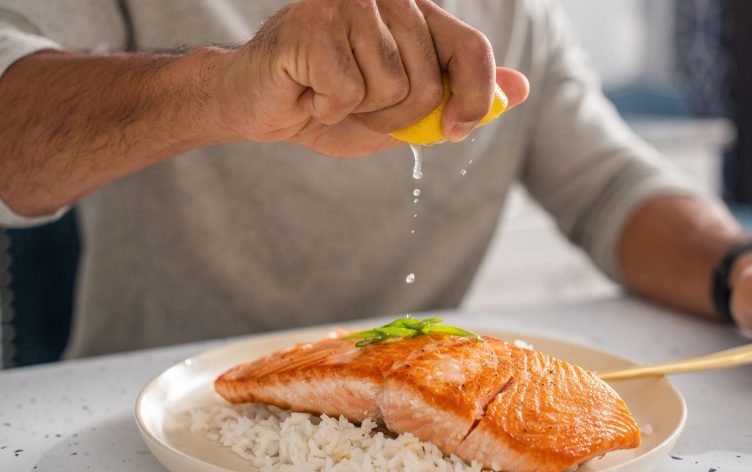
4 People Who Could Use More Protein and How to up Your Intake
If you’re trying to get fit or lose weight, increasing your protein intake might sound like a good idea. After all, the macronutrient helps you feel fuller longer and build and maintain muscle to keep your metabolism humming.
But you might not need as much as you think. “Most Americans can rest assured they are not protein deficient,” says Dana Ellis Hunnes, PhD, a senior registered dietitian at the UCLA Medical Center. In fact, studies show the majority of us get more than enough thanks to plenty of high-protein foods like lean meats, beans, legumes, nuts and seeds in our diet.
In general, adults need a little over 7 grams of protein for every 20 pounds of body weight (or at least 0.8 grams of protein per kilogram of body weight) each day, per the National Academy of Medicine. You’re covered if you dedicate anywhere from 10–35% of your intake to protein. For perspective, here’s what a healthy plate looks like.
However, some people may struggle to meet their daily needs. Here are four groups who could be low on protein, plus how to make sure you’re hitting your goals.
ELDERLY ADULTS
“Adults over the age of 65 might get too little protein as they require more to maintain strength with age,” says Jinan Banna, PhD, a registered dietitian and professor of nutrition at the University of Hawaii. Dips in appetite and the ability to absorb the nutrient mean 1-in-3 older men and 1-in-4 older women could be low on protein, per a 2016 study published in Nutrition. To overcome this deficit, aim for at least 0.54–0.9 grams of protein per pound of body weight (1.2–2.0 grams per kilogram) each day. Protein shakes, snacks like walnuts, and shared meals could be your best bet to help, research shows.
VEGANS
Contrary to popular belief, the vast majority of vegans hit their protein targets. But newbies transitioning from a traditionally high-meat diet may need to study high-quality, plant-based protein sources to be sure they’re covered. “Be mindful to include protein in each meal,” says Danielle McAvoy, RD, a registered dietitian with Strong Home Gym. Whole grains such as quinoa as well as nutritional yeast and hemp, chia, and flaxseeds are simple and easy add-ins for your cart, she says.
ATHLETES
Most athletes hit their protein needs without the need for supplements or shakes, per the American College of Sports Medicine. But elite competitors — those who work out an hour or more most days of the week — do have a generally higher recommended range, notes McAvoy. Aim for 0.54–0.9 grams of protein per pound of body weight (1.2–2.0 grams per kilogram) every day, and remember timing is key. Getting in protein before and after workouts and throughout the day is essential to recover and build muscle mass.
PEOPLE ON CALORIE-RESTRICTED DIETS
If you’re using a slight calorie deficit to lose weight, you may need to strategize to preserve muscle mass by upping your protein intake to 0.81–1.09 grams per pound of body weight (1.8–2.4 grams per kilogram of body weight) each day. “Maximize the amount of protein in the foods you’re eating,” says McAvoy. She recommends higher-protein lentil or chickpea pasta, Greek yogurt, and handy snacks like hard-boiled eggs or cheese and turkey roll-ups.
THE BOTTOM LINE
In most cases, there’s no need to worry — many of us are getting more than enough protein. But if you’re concerned you could be low on protein, the best next step is to contact a registered dietitian for personalized guidance, says Hunnes. In the meantime, you can give yourself a nutritional check-up by setting a protein goal and tracking your intake on an app like MyFitnessPal.





